If you are looking wholesale lighting solutions, click here.

Looking for a modern, energy-saving lighting option? LED panel lights give you bright, even light at a smart cost. To pick the right one, you should know the main panel types and where each works best.
This guide shows you the differences, the quick sizing rules, and what to check before you buy. Ready to improve your lighting? Let’s start.
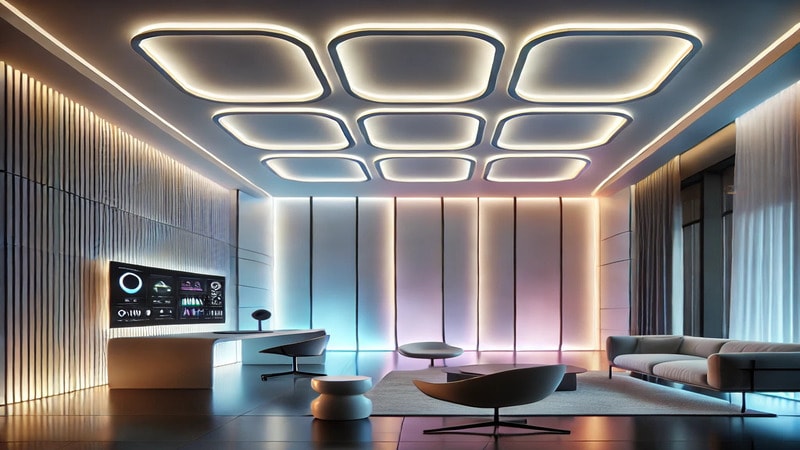
LED panels use arrays of LEDs, a diffuser, and an optical plate to spread light evenly. They are thin, durable, and use far less power than old lamps.
You can choose from common sizes like 1×4, 2×2, and 2×4, plus low-glare office versions and outdoor-rated models. With a few checks on size, color, and controls, you can match panels to almost any business space.
Some common types of LED Panel Lights are:
| Type | What it looks like | Where it shines | What to check |
|---|---|---|---|
| Edge-lit | Ultra-slim, very uniform face | Offices, hotels, homes | Slightly lower brightness; premium look |
| Back-lit | LEDs behind diffuser, deeper body | Retail floors, schools, warehouses | Higher lm/W, more output |
| Surface-mounted | Sits on ceiling surface | Concrete or high ceilings, retrofits | Fast install, easy service |
| Recessed | Flush with ceiling grid | New builds, drop ceilings | Needs grid/cutout; cleaner look |
| Smart/dimmable | App/scene control | Mixed-use spaces | Match driver: TRIAC, 0–10 V, DALI |
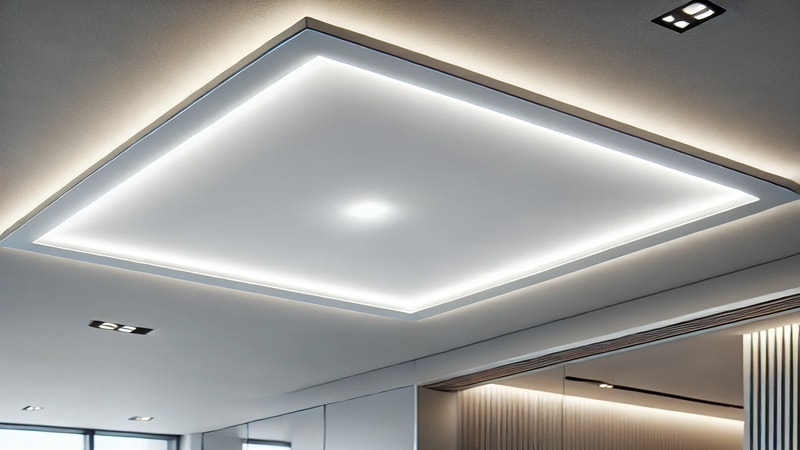
Differences between Edge-lit and Back-lit panels based on their properties are as follows:
Quick pick: You want a soft, premium look and a very thin body? Choose edge-lit. You need more punch per watt or higher ceilings? Choose back-lit.
For Outdoor settings, use Outdoor LED Panel Lights, specifically designed to be weather-resistant. Lastly, for Residential use, focus on sleek and energy-efficient light panels.
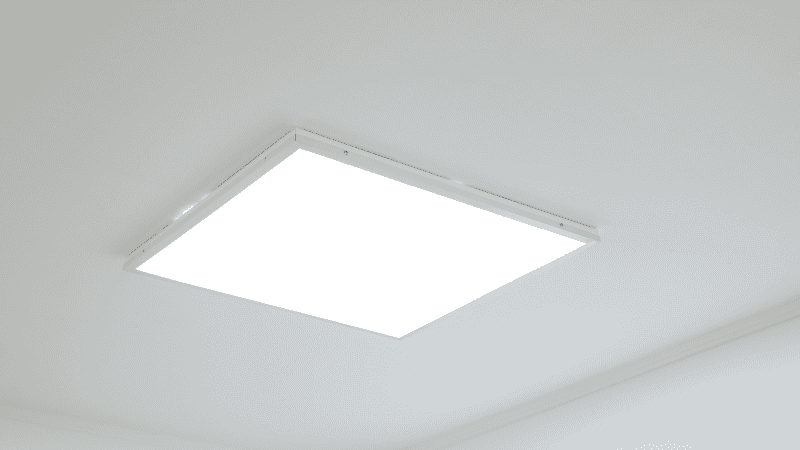
Surface-mounted panel lights go on the ceiling. Recessed LED Panel Lights are installed within the ceiling.
Dimmable panels let you set the mood and save energy. You can use simple TRIAC dimming, or go pro with 0–10 V and DALI for smooth control.
Smart modules add app and voice control if you want scenes and schedules. Always confirm driver compatibility before you order.
These lights also provide comfort by adjusting brightness based on users’ preferences.
With so many types available, choosing the right LED panel light can be tricky. Here we will discuss the Best LED Panel Lights with CCT and CRI by space:
Here’s a concise intro you can place right above the table:
| Space | CCT (K) | CRI | Notes |
|---|---|---|---|
| Living room | 3000–3500 | ≥80 | Warm-neutral, relaxed feel |
| Bedroom | 2700–3000 | ≥80 | Cozy, easy on the eyes |
| Kitchen | 3500–4000 | ≥80 | Clean, bright prep light |
| Office / classroom | 3500–4000 | ≥80 | Low glare if possible |
| Retail / gallery | 3500–4000 | ≥90 | Better color pop |
| Warehouse | 4000–5000 | ≥80 | Higher lumens, tall spaces |
Your living room feels good with warm to warm-neutral light at 3000–3500 K. Bedrooms are softer at 2700–3000 K.
Kitchens work well at 3500–4000 K, so food looks true. Pick panels that are dimmable and aim for CRI 80 or above; use CRI 90 if you care about color accuracy for makeup or photos.
Panels look slim and modern, and they sip power, so your bills drop over time.
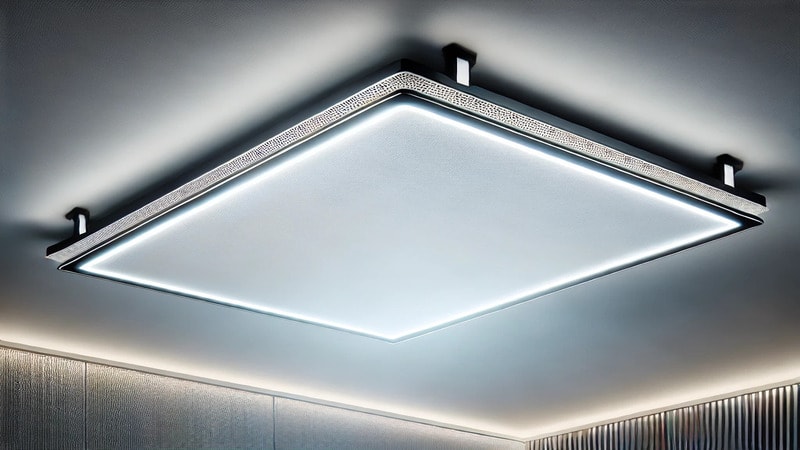
Different types of LED lights are used in commercial spaces. Offices and Conference Rooms use Neutral or Cool White color temperature ranges(4000 – 5000K) LED panels. This ensures even and bright light distribution.
Warehouses: 4000–5000 K with higher lumens and good efficiency, so aisles stay bright and safe. Choose back-lit for higher output and better lm/W in tall spaces.
Retail and Showroom Spaces: They need white color temperature (4000K). It enhances the product colors and improves customer experience.
Offices and meeting rooms: 3500–4000 K with low glare makes screens easier to read. Retail: 3500–4000 K with CRI 90 helps products pop.

LED panel lights offer multiple benefits, such as:
When choosing an LED panel, businesses should think about multiple factors. For workplaces, high-brightness panels are ideal. On the other hand, low-lighting effect panels are used in living rooms.
Energy efficiency is another factor to consider. Make sure to choose lower-wattage LEDs, as they use less energy and, hence, are energy-efficient.
Color temperature ranges play a vital role in choosing the right LED panel. Make sure to choose the right one for your needs.
Additionally, the Color Rendering Index (CRI) measures the ability of light to show the right colors. A CRI of 80+ is best for homes and offices. Retail spaces need to show vibrant colors, should use panels with CRI 90+.
Lastly, evaluate the durability of LED panels by checking their lifespan and warranty terms. A high-quality LED panel lasts more than 50,000 hours and comes with a warranty.
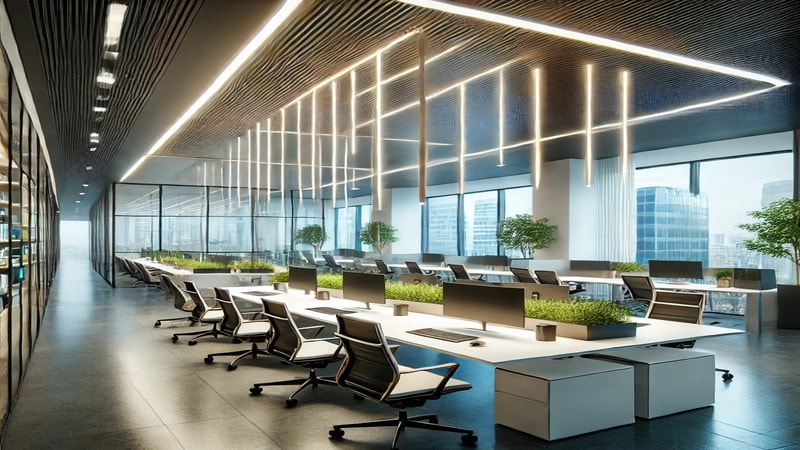
The main differences between outdoor and indoor lights are:
| Features | Indoor LED Panels | Outdoor LED Panel |
|---|---|---|
| Used in | Homes and Offices | For exterior lighting setups. |
| Brightness level | Moderate brightness for warmth and comfort | High brightness for clear visibility outdoors |
| Weather-resistance/Water proofing/Dust proofing | Optional | Mandatory |
| Heat resistance | Designed for room temperature and cannot tolerate extreme heat. | Designed for extreme hot and cold temperatures. |
| IP rating | Need Low IP rating (IP20 – IP40) | Need High IP rating (IP65 or higher) |
Opt for a supplier with:
| Region/Use | What to look for | Why it matters |
|---|---|---|
| North America | UL or ETL, FCC; DLC recommended for rebates | Safety, EMC, and utility incentives |
| European Union | CE + RoHS, ErP/Ecodesign | Safety, hazardous-substance limits, energy rules |
| UK | UKCA (plus RoHS) | Post-Brexit compliance |
| General (in/outdoor) | IP rating (IEC 60529), optional IK impact rating | Dust/water protection, durability |
| Optics/Photometry | LM-79 (luminaire), IES files | Real, model-specific performance data |
| LED lifetime | LM-80 (LED) + TM-21 (projection) | Credible life claims (e.g., L70 50,000 h) |
Proper installation and maintenance extend the life and are linked to their durability of panels.
To install LED light panels, follow the given procedure:
To install surface-mounted LED panels, first mark a suitable mounting point on the ceiling. Once marked, install mounting brackets. Next, connect the wiring to the power source.
Once wiring is connected, secure the LED panel in the bracket. Lastly, test the panel and secure it properly.
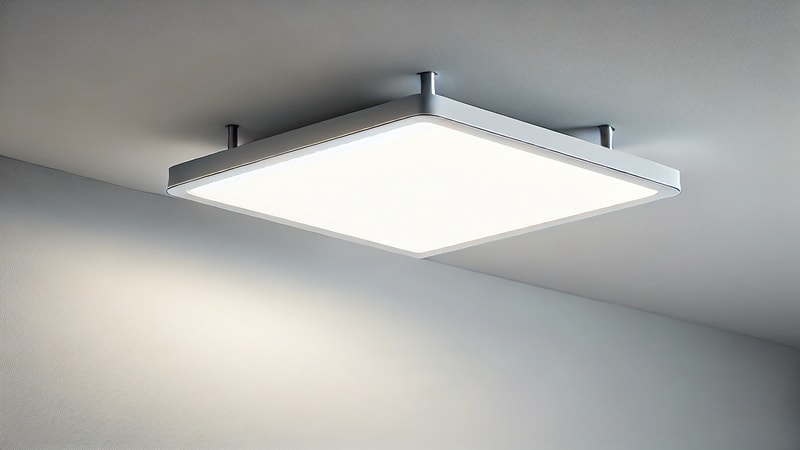
For installing a recessed LED panel, first find a place with enough space. Then, cut a shape in the ceiling and insert the panel. Once the panel is inserted, connect the panel to the power source. Lastly, test the panel and secure it.
Tips and tools to make installation easier are:
Tools: Screwdriver, Drill, Voltage tester, measuring tape, screws
Tips: While installing the panel, keep the following tips in mind:
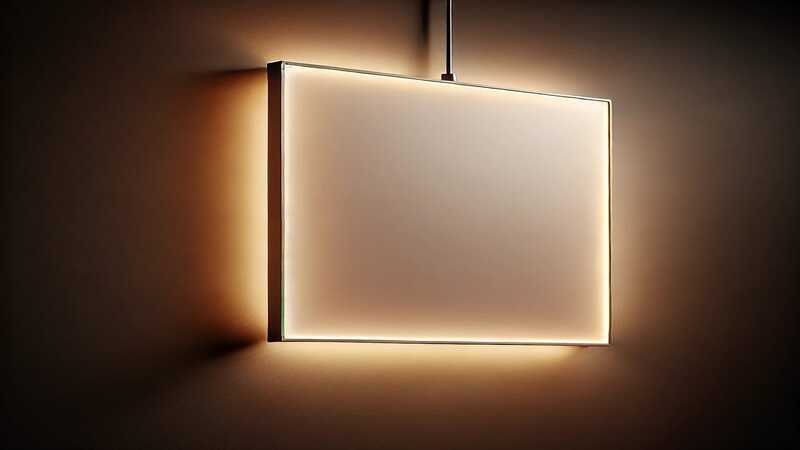
Follow these practices to ensure the longevity of LED panels:
Regular cleaning is essential as dirt hardens over time and becomes difficult to remove. To keep panels in good condition, clean them regularly with a soft cloth. Don’t use harsh chemicals as they can damage the panels.
By cleaning panels regularly, you can easily maximize their lifespan.
Common troubleshooting steps help in resolving panel issues easily. In case of flickering, check wiring to ensure a stable power supply. Accumulated dirt in panels reduces light intensity, so make sure to clean panels regularly.
If the panel is not turning on, replacing the LED driver may help. Frequent maintenance can prevent these issues.
You can easily maximize the lifespan of panels by following some precautions. If the panels are not waterproof, do not install them in areas with high moisture. Always ensure proper air circulation around panels to prevent overheating.
Power fluctuations can sometimes damage the panels. Make sure to use voltage stabilizers to avoid such incidents.
Now that you know how to choose the best LED panel lights, take action. Figure out your specific needs and transform your business now.
To make informed decisions, make sure to read our article on the Pros and Cons of LED.
Do you want the best lighting solution for your business? If so, Risun Corp is your top choice. The experts at Risun Corp provide top-notch lighting solutions for your business requirements.
With our 14 years of experience, we are here to support you with all your requirements. Contact us today to get tailored services for your lighting-specific needs.
Q1: What is the difference between edge-lit and back-lit LED panels?
A: Edge-lit is ultra-slim and very uniform; back-lit is brighter and often more efficient. Use edge-lit for a sleek look, back-lit for higher output.
Q2: Which color temperature should I choose for home or office?
A: Homes feel best at 2700–3500 K. Offices and classrooms work well at 3500–4000 K with low glare.
Q3: Do I need CRI 90?
A: CRI 80 is fine for most rooms. Choose CRI 90 for retail, galleries, and color-critical tasks.
Q4: Can LED panels be dimmed?
A: Yes. Match the driver to your system: TRIAC for basic, 0–10 V or DALI for smooth, professional control.
Q5: What IP rating do I need outdoors?
A: Use IP65 or higher for exposed areas. For covered but humid zones, at least Damp-rated is recommended.
Comprehensive Lighting Solutions for MRO Wholesalers and Professionals
send your inquiry
Hi, I'm the author of this post, and I have been in this field for more than 15 years. If you want to wholesale lighting fixtures or lighting related product, feel free to ask me any questions.
Learn More >>Download our catalog to view all of our lighting products.
Ready to get started ?
Send Your InquiryOur team will get back to you promptly

please
download
Get notified about new products
Our team will get back to you promptly!
Add your first comment to this post